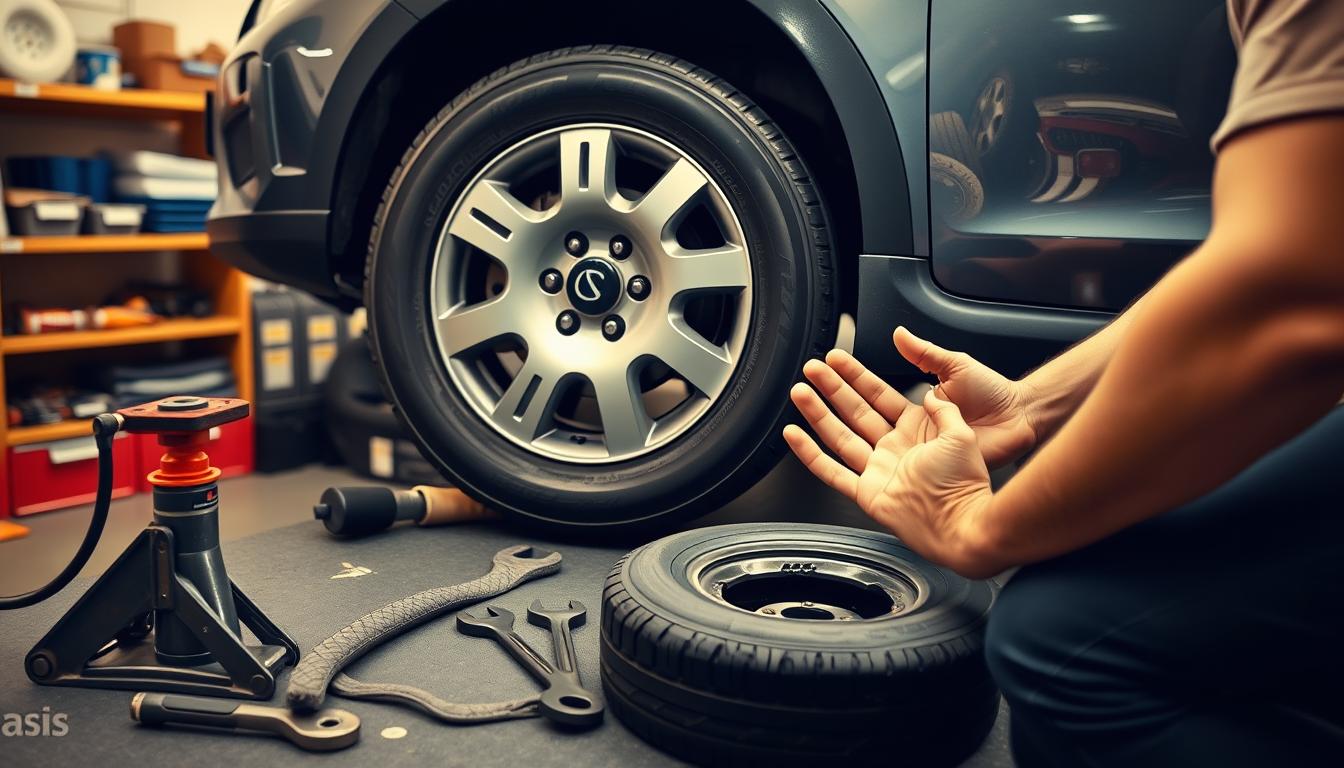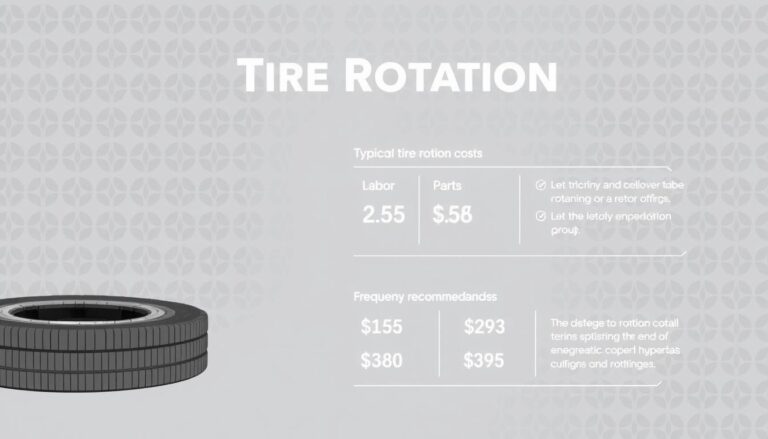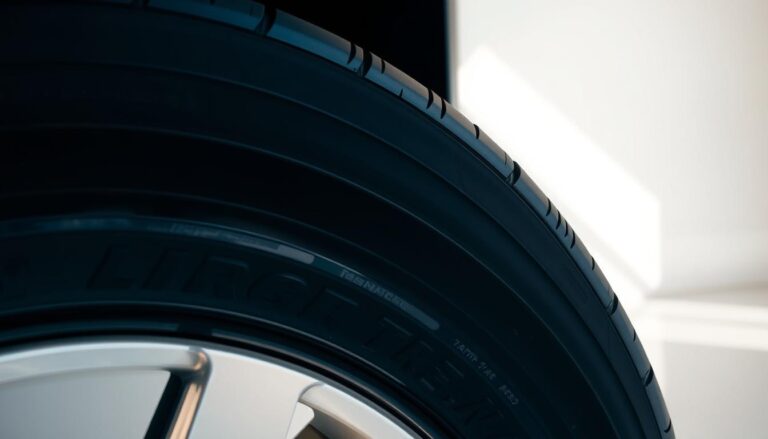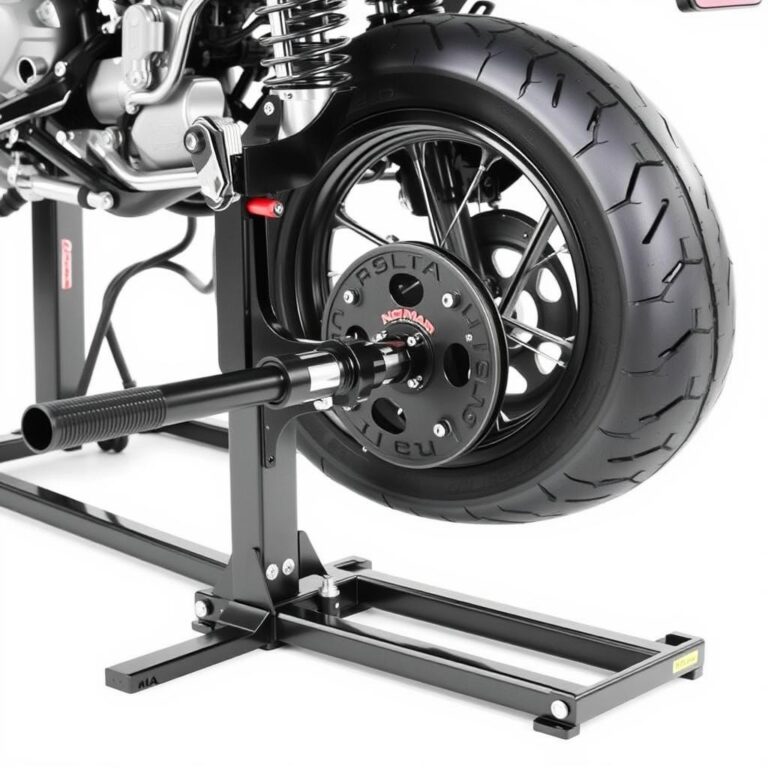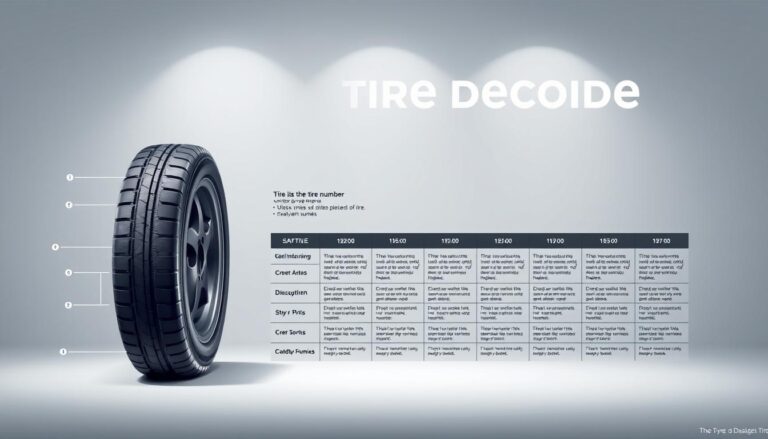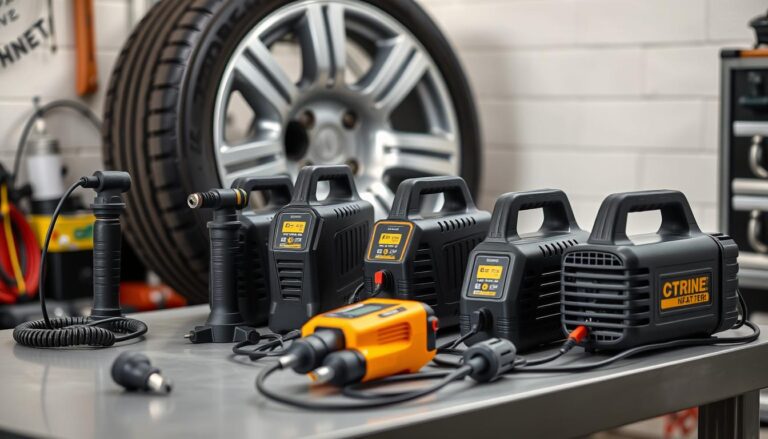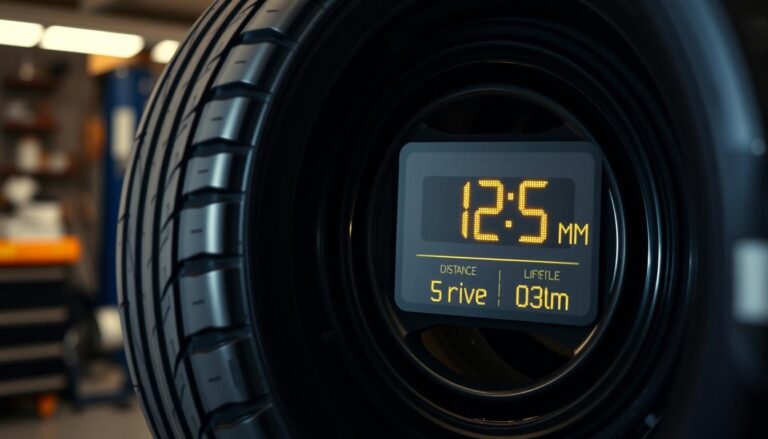Flat Tire? No Problem! Learn to Change a Tire
Imagine driving down a remote highway and hearing that dreaded thumping sound. Your tire has gone flat. Panic is not necessary. Knowing how to change a tire is a key skill that saves time, money, and stress.
Flat tires are common. Whether you’re an experienced driver or new to cars, learning to change a tire is vital. Most drivers will face a flat tire at least once.
This guide will show you how to change a tire safely and quickly. You’ll learn about the tools you need, how to place the jack, and important safety tips. These tips are essential when you’re stuck on the side of the road.
By the end of this tutorial, you’ll be confident in handling a flat tire. No more waiting for hours for help or paying high service fees. Your new skills will make fixing a flat tire easy and fast.
Being prepared is important. Knowing the basics of changing a tire can help you get back on the road fast. Let’s cover everything you need to know to master this essential skill.
Essential Tools and Equipment for Changing a Tire
Getting ready for a tire change needs careful planning and the right tools. Knowing which tools are key can help a lot when you need to change a tire on the side of the road.
https://www.youtube.com/watch?v=0KDMdYww4VE
Must-Have Safety Equipment
When changing a tire, safety comes first. It’s important to be seen and protected:
- Reflective safety vest
- Reflective warning triangles
- Bright flashlight with extra batteries
- Work gloves
Basic Tire Changing Tools
Every driver should have these basic tools for changing a tire:
| Tool | Purpose | Importance |
|---|---|---|
| Car Jack | Lift vehicle safely | Critical |
| Lug Wrench | Remove and tighten lug nuts | Essential |
| Spare Tire | Temporary replacement | Mandatory |
Optional but Helpful Items
These tools are not necessary but can make changing a tire easier:
- Tire pressure gauge
- Wheel wedges
- Portable air compressor
- WD-40 or penetrating oil for stubborn lug nuts
Keep these tools in a place you can easily reach in your car. Check them often to stay ready for any tire problems.
Safety First: Finding the Right Spot to Change Your Tire

Finding the right spot to change your tire is key. Your safety depends on picking a place away from traffic and dangers. Look for flat, solid ground with little movement around.
Start with checking the location for safety. Here are important areas to look for:
- Flat, level surfaces like parking lots or wide road shoulders
- Areas with firm ground and minimal slope
- Locations with enough space between your vehicle and moving traffic
- Well-lit areas during nighttime emergencies
When you need to change your tire, turn on your hazard lights right away. These lights tell other drivers you’re having trouble and need room.
Important steps for safety include:
- Pull as far off the road as possible
- Place reflective warning triangles behind your vehicle
- Wear a bright reflective vest if available
- Check the terrain around you for stability
Warning: If you can’t find a safe spot or feel unsure, call roadside assistance right away.
In some cases, you need a pro. Changing a tire on urban highways, steep hills, or busy areas is too risky for you to do alone.
How to Change a Tire: Step-by-Step Guide
Changing a flat tire might seem scary, but with the right guide, you’ll be driving again soon. Our instructions will help you do it safely and quickly.

First, make sure you’re in a safe spot, away from cars. Getting ready is important for a smooth tire swap.
Locating Your Spare Tire
Most cars keep the spare in one of these spots:
- Trunk floor
- Underneath the cargo area
- Mounted underneath the car
Check your car’s manual to find where the spare is. Some newer cars have a repair kit instead of a full spare.
Proper Jack Placement
Finding the right spot for the jack is key for safety:
- Look in your car’s manual for the exact spot
- Find the metal frame near the tire
- Avoid the plastic or weak spots
Lug Nut Removal Technique
Removing lug nuts needs a special method:
- Loosen lug nuts before lifting the car
- Use the tire iron to turn counterclockwise
- Apply steady, even pressure
- Don’t remove nuts completely until the car is up
By following these steps, you’ll change your tire safely and with confidence.
Common Mistakes to Avoid During Tire Changes
Changing a tire can be tough for many drivers. When you do it yourself, you might make mistakes that can be dangerous. It’s important to know these mistakes to change a tire safely and correctly.
Some common mistakes include:
- Incorrect jack placement – putting the jack in the wrong spot can harm your car’s frame or make it unstable
- Not using the parking brake before starting the tire change
- Not tightening lug nuts enough or tightening them too much
- Trying to change a tire on uneven or soft ground
Good tire changing tips start with knowing the right way to do it. Drivers should always:
- Choose a flat, stable place for tire changes
- Use wheel wedges to keep the car from moving
- Follow your car’s specific jack placement guidelines
- Tighten lug nuts in a star or cross pattern
Safety is key when changing a tire. Wear reflective clothes, use hazard lights, and stay away from traffic. Knowing and avoiding these mistakes helps make tire changing safer and more efficient.
Understanding Your Vehicle’s Spare Tire Type
Knowing your spare tire type is key when replacing a car tire. Each spare has its own features that affect your car’s safety and performance during a tire change.

Spare tires vary in design, each suited for different driving needs. Choosing the right spare can greatly impact how fast and safe you can change a tire.
Temporary Donut Spares
Donut spares are small, light, and common in many cars. They have big limitations:
- Maximum speed: 50 miles per hour
- Maximum distance: 50-70 miles
- Designed for short-term emergency use
Full-Size Spare Features
Full-size spares offer more reliability and flexibility. They match your car’s tires in size and performance.
| Feature | Full-Size Spare | Donut Spare |
|---|---|---|
| Weight | Standard tire weight | Lightweight |
| Speed Limit | Normal driving speeds | 50 mph maximum |
| Distance Capability | Unlimited | 50-70 miles |
Run-Flat Tire Options
Run-flat tires are a modern solution. They can stay intact even after a puncture, letting you drive for a bit longer.
- Continue driving 50-100 miles after puncture
- Eliminate need for immediate roadside tire change
- Reduce spare tire storage requirements
Knowing about these spare tire options helps drivers make better choices in emergencies. It improves their car tire replacement strategy.
Time-Saving Tips for Quick Tire Changes
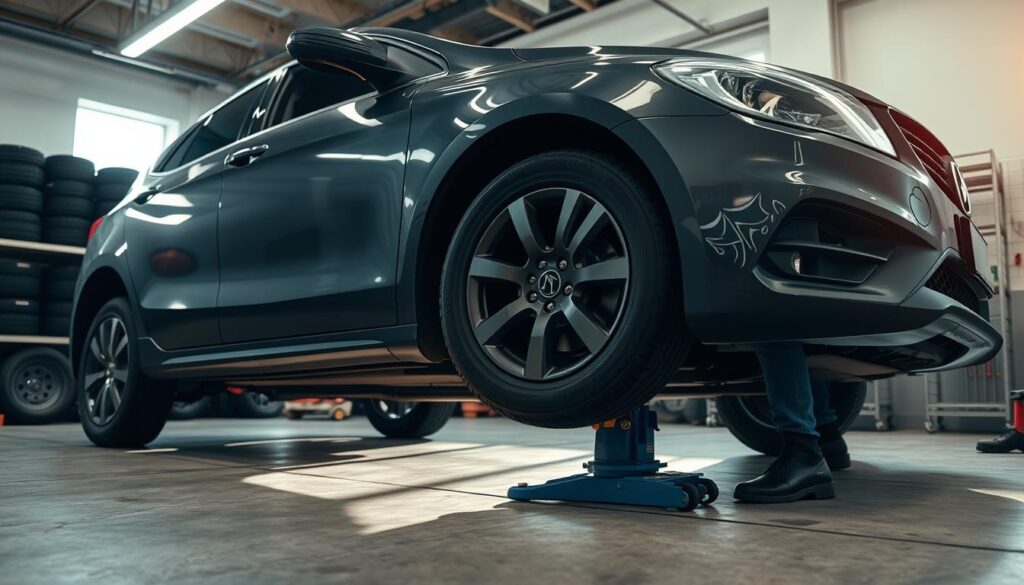
Learning how to quickly change a tire can save you a lot of time. It also helps reduce stress when you’re stuck on the side of the road. Being prepared is the first step to making tire changes fast and easy.
Experts say there are a few key ways to make tire changes quicker:
- Organize your tools before starting the tire change
- Practice tire changing in a safe environment before an actual emergency
- Keep your spare tire and jack in an easily accessible location
- Invest in high-quality, lightweight tools
To make quick tire changes even easier, put together an emergency kit. This kit should have all the tools you need. Being ready for a flat tire can save you a lot of hassle.
| Tool | Purpose | Recommended Type |
|---|---|---|
| Lug Wrench | Removing Lug Nuts | Telescoping, Lightweight |
| Jack | Lifting Vehicle | Hydraulic Scissor Jack |
| Gloves | Hand Protection | Mechanic-Grade Grip |
Pro tip: Regularly check and maintain your spare tire’s pressure and condition to ensure it’s ready when you need it most.
Practice makes perfect with tire changing tips. The more you know about your car, the quicker and more confident you’ll be when changing a tire.
When to Call Professional Help Instead
Changing a tire yourself can sometimes be risky or not possible. It’s important to know when to ask for professional help. This is for your safety and to protect your vehicle.
Professional help is key in many tough situations during a flat tire repair. Knowing when to call for help can prevent accidents and damage to your vehicle.
Dangerous Roadside Situations
- Busy highway with high-speed traffic
- Steep mountain or cliff-side roads
- Isolated or poorly lit areas after dark
- Areas with significant personal safety risks
Complex Tire Problems
Some tire issues need special skills and tools that go beyond basic tire change methods.
| Tire Problem | Professional Intervention Required |
|---|---|
| Damaged Wheel Rim | Requires professional assessment and possible replacement |
| Multiple Flat Tires | Complex repair that goes beyond standard roadside skills |
| Severe Tire Sidewall Damage | Immediate professional tire replacement is needed |
Weather Considerations
Extreme weather can make fixing a flat tire very hard. Professionals are better at handling tough weather like:
- Freezing temperatures
- Heavy rainfall
- Snowstorms
- Extreme heat
Always put your safety first when dealing with a tough tire change. If unsure, call a professional roadside assistance service.
Maintaining Your Spare Tire and Tools
Keeping your spare tire and tools in good shape is key. It helps you handle car tire replacement how-to steps smoothly. Regular checks mean you’re ready for any roadside surprises.
Here are the main steps for your spare tire:
- Check tire pressure monthly
- Inspect for visible damage or wear
- Rotate spare tire periodically
- Clean and protect from environmental damage
For tire change safety, your tools must be in great shape. A well-kept jack, lug wrench, and other tools are vital in an emergency.
| Tool | Maintenance Frequency | Key Check Points |
|---|---|---|
| Jack | Every 6 months | Lubrication, structural integrity |
| Lug Wrench | Every 3 months | Rust prevention, proper alignment |
| Spare Tire | Monthly | Pressure, tread depth, sidewall condition |
Pro tip: Keep your spare tire and tools in a cool, dry spot. This prevents damage and keeps them reliable when you need them.
By sticking to these maintenance tips, you’ll be ready for any tire emergencies. Your vehicle will stay safe and ready for the road.
Preventive Measures to Avoid Flat Tires
To avoid flat tires, you need to take care of your vehicle. Start by learning how to protect your tires from damage.
Keeping your tires in good shape is key. Here are some steps to help:
- Check tire pressure monthly
- Rotate tires every 5,000-7,500 miles
- Inspect tire treads for wear patterns
- Avoid road hazards and debris
Proper tire pressure is vital. If your tires are not the right pressure, they can wear out faster or even blow out.
| Maintenance Action | Recommended Frequency | Potential Benefit |
|---|---|---|
| Tire Pressure Check | Monthly | Reduces Flat Risk by 60% |
| Wheel Alignment | Every 6 Months | Prevents Uneven Tire Wear |
| Tire Rotation | Every 5,000-7,500 Miles | Extends Tire Lifespan |
Choose good quality tires that fit your driving needs. Seasonal tire selection can make your car safer and prevent tire failures.
Get your tires checked by a pro at least twice a year. This can spot problems early. Keeping an eye on your tires is part of being a responsible car owner.
Conclusion
Learning to change a tire is a must for every driver. A step-by-step guide helps you deal with roadside emergencies safely. Knowing the right steps and having the right tools makes it easier.
Practice is key for mastering tire changes. Try it out in a safe spot first. Knowing where your spare tire and tools are can save time in an emergency.
Being ready for emergencies is more than just knowing how to change a tire. Regular checks and keeping an emergency kit up-to-date are also important. Teach others what you’ve learned to help them feel more confident on the road.
While this guide is detailed, always put safety first. If you’re unsure or face tough conditions, call for professional help. Your safety is the most important thing.
